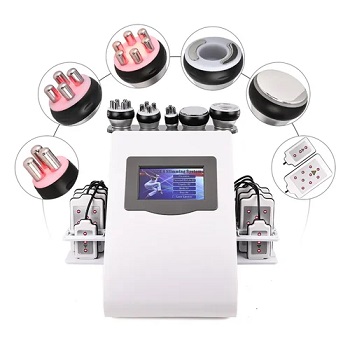When you were a child, what did your parents or caregivers do when you caught a cold? Most adults turned to the same tools: chicken soup, encouraging extra sleep, and maybe some over-the-counter medicine. Those classics still help, but they’re just the beginning of what you can do to support your body’s natural healing processes.
Fighting a cold naturally involves a multi-sensory approach with more nuanced approaches. Your immune system responds to heat, movement, mood, and nutrition, working more efficiently when supported from these angles. These lesser-known methods can speed your recovery: strategic hydrotherapy, immune-boosting spices, gentle movement practices, and aromatherapy techniques. They complement traditional remedies and can help you bounce back a few days sooner.
Soak the Symptoms Away With a Hot Tub
There’s no cure for the common cold, but some therapies ease symptoms and simply feel good. Take warm water immersion in a hot tub, for example. The steam from a 20-minute heated soak eases congestion and can temporarily reduce body aches. And if you soak in hot water before bed, the relaxation can help you sleep better. Combining heat, humidity, and relaxation creates an environment where your body shifts into recovery mode more effectively.
To boost the effects, keep the temperatures about five degrees lower and drink plenty of water before and after your session. And remember, you can use your hot tub more than once a day, as long as you stick with that time limit.
Healing Through Heat in the Kitchen
Your spice cabinet can complement (or even replace) how your medicine cabinet gets used when you have a cold. Warming spices like ginger, turmeric, cayenne, and cinnamon do more than just make food taste good; they contain natural chemicals that help your body fight colds.
- Ginger has gingerols that can slow down how quickly viruses multiply.
- Turmeric contains curcumin, which helps reduce swelling in your nose and throat.
- Garlic releases a compound called allicin that breaks down the outer covering of some bacteria.
When you consume these spices together, they team up to create an environment in your body where cold viruses have a harder time spreading and making you feel sick.
Your kitchen’s pantry might have other ingredients to combine with some of those spices for cold-healing recipes:
- Fresh ginger tea with honey soothes sore throats.
- Simmer vegetable or chicken stock with sliced ginger, turmeric, garlic, onions, and a pinch of cayenne for 20 minutes. Strain and sip throughout the day for continuous symptom relief.
Remember to have adequate protein when you’re sick; that gives your body the building blocks for immune cell production and tissue repair. High-protein foods include eggs, Greek yogurt, lentils, salmon, and chicken breast.
Why Staying in Bed Isn’t Always Best
Complete bed rest isn’t always the fastest path to recovery when you have a cold. Light, mindful movement can accelerate healing by stimulating your lymphatic system, which is responsible for moving immune cells throughout your body and clearing waste products.
Unlike your circulatory system, your lymphatic system lacks a pump (like your heart) and relies on muscle contractions to move fluid. That means gentle activity can help your body fight infection.
Low-effort movement practices when you’re under the weather can be surprisingly effective. Try gentle stretching focused on the neck and shoulders to relieve tension. Then, take a short, slow walk indoors or outside, in the fresh air. Restorative yoga poses like legs-up-the-wall or supported bridge pose are easy and clear the mind; so do simple tai chi movements or qigong breathing exercises.
These activities improve circulation without demanding energy. The sweet spot is finding the balance between movement and rest. Listen to your body’s signals and avoid overexertion. Movement therapy works best when paired with adequate hydration, which flushes toxins out of your system.
Essential Oils That Support Respiratory Relief
Now that you’re out of bed, consider trying aromatherapy: Your sense of smell connects directly to your brain and nervous system, so oils are a powerful symptom management source.
Some essential oils contain compounds that help open airways, reduce inflammation, and fight pathogens directly. For example, eucalyptus oil contains eucalyptol, which breaks up mucus and reduces cough frequency. Peppermint oil delivers menthol, creating a cooling sensation in the airways, making breathing easier. Tea tree oil has documented antimicrobial properties that can help fight secondary infections.
To use essential oils safely, create a steam tent by adding a few drops to a bowl of hot water, placing a towel over your head, and breathing deeply. Or, add 5-7 drops (mixed first with a carrier oil like coconut) to a warm bath. Enjoy more aromatherapy benefits by using a diffuser in your bedroom while resting and applying diluted oils to your chest or the soles of your feet.
Beyond their physical effects, these scents can also lift your mood and reduce anxiety. That kind of emotional support contributes to faster recovery.
Don’t Just Rest. Recover.
A cold doesn’t have to derail your life for a week or more. Don’t forego the soup or rest; Combine those with natural therapies to kickstart your recovery. Hydrotherapy, spice therapy, gentle movement, and aromatherapy support your immune system and make you feel like you’re treating yourself.
Think of it as a spa day or a recovery ritual that blends comfort with intentional immune support. Begin your day with gentle stretching, followed by a 20-minute hot tub soak and a warming turmeric tea. Set up a diffuser by your bed, and take a well-deserved nap.
Healing follows its on timeline, but these sensory strategies add extra support; The synergy between natural methods and modern science is quite remarkable. Sometimes, the smallest changes to your recovery routine yield the most noticeable results.



